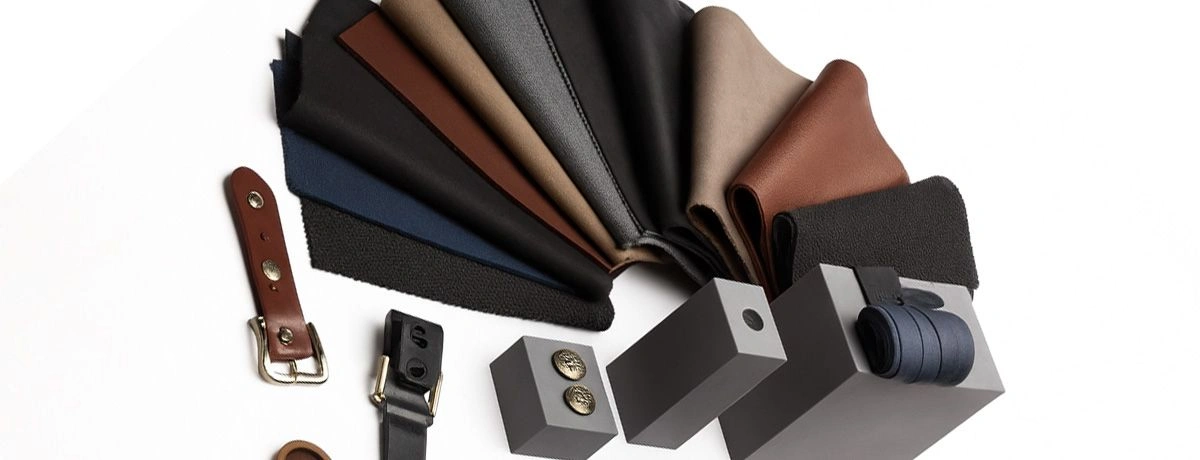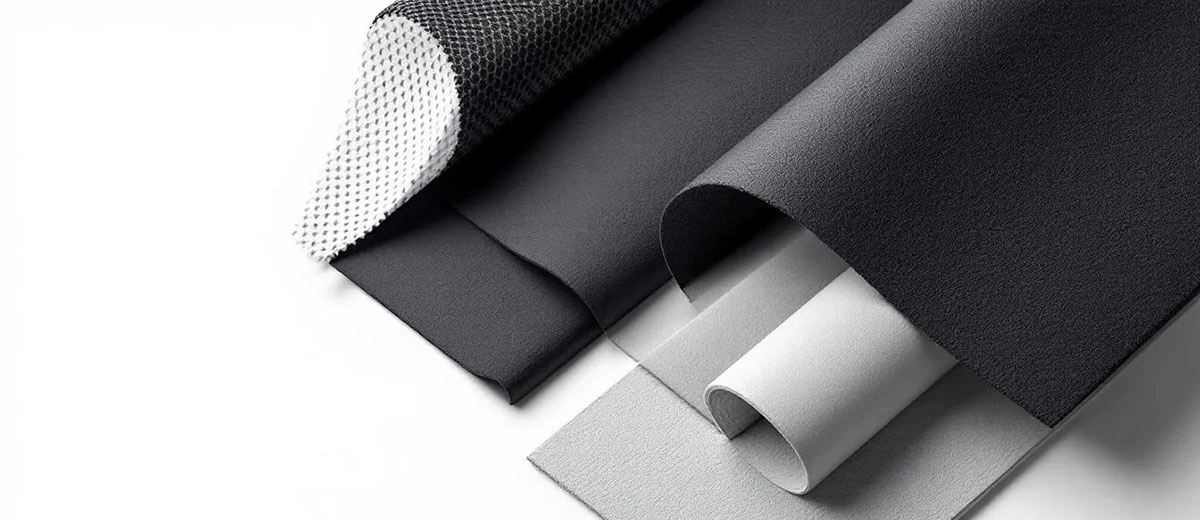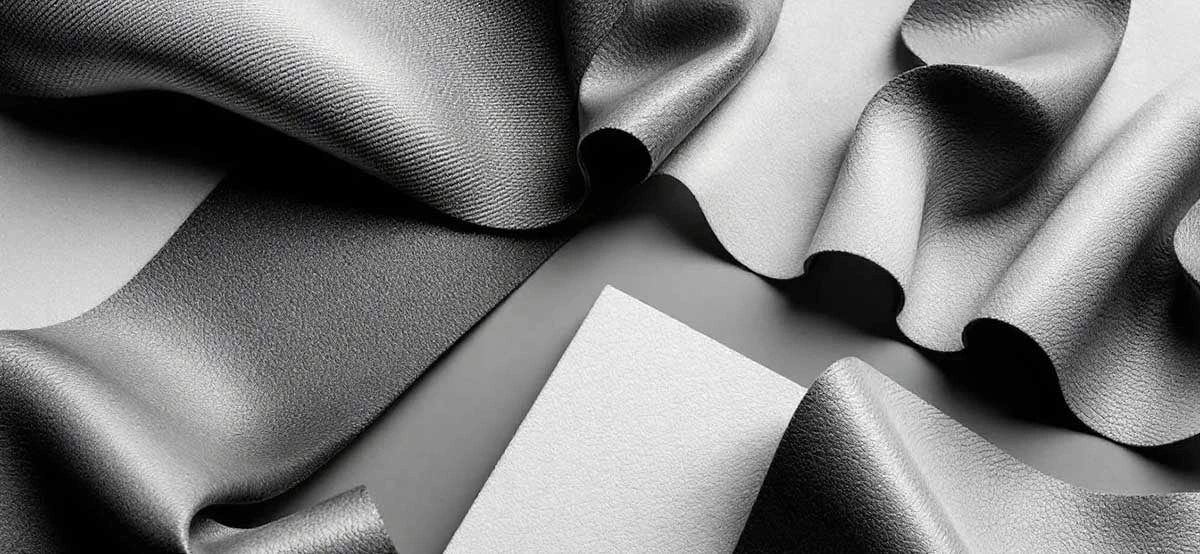How to Choose the Best Shoes Material for Comfort and Durability

Selecting the right shoes material is essential for comfort and durability. This guide will explore common materials like leather, synthetic fabrics, and canvas, helping you make an informed choice for your next pair of shoes.
Key Takeaways
-
Selecting the right shoe material is crucial for comfort and durability; options include leather, synthetic materials, and canvas, each with unique benefits.
-
Different shoe soles, like rubber, EVA foam, and leather, significantly affect comfort, support, and performance based on their specific properties.
-
Customization allows for tailored fit and design, enhancing comfort and functionality while also providing an opportunity for sustainable material choices.
Understanding Upper Materials

The upper part of a shoe is more than just its face; it plays a key role in providing comfort, durability, and style. Common materials used in shoe manufacturing include leather, synthetic materials, and canvas, each offering unique benefits and characteristics.
Choosing the right footwear material is crucial for informed purchasing decisions, whether for casual wear or specific needs. Each material has unique characteristics that set it apart.
Leather Shoes
Leather shoes are renowned for their durability, breathability, and timeless style. Unlike other materials, leather conforms to the shape of your foot over time, providing a customized fit that enhances comfort. This makes leather shoes a long-term investment that not only stands the test of time but also improves with age.
When it comes to variety, leather offers several options. Nubuck, for instance, is a type of leather known for its luxurious feel and is used in both casual and dress shoes. Whether you’re looking for work boots or fashion-forward footwear, leather shoes bring a touch of elegance and robustness to your wardrobe.
Synthetic Materials
Synthetic materials like polyester, nylon, and polyurethane have revolutionized the shoe industry. Known for their durability and practicality, these man-made materials are among the most popular materials for various types of footwear. Lightweight and strong nylon materials, for example, enhance comfort and performance, making them ideal for athletic shoes.
Moreover, synthetic materials offer easy maintenance, a key selling point for many consumers. Materials like polyurethane and specialized options like Birko-Flor mimic the look and feel of leather while being easier to care for. This makes them a convenient choice for those seeking both style and practicality in their shoes.
Canvas Shoes
Canvas shoes, made from cotton or a blend of cotton and synthetic fibers, are a go-to for casual wear. Their lightweight and breathable nature makes them perfect for warm weather and everyday activities. Available in a myriad of colors and designs, canvas shoes are versatile enough to suit any style.
Their comfort and versatility make them a popular choice for many. Whether you’re pairing them with shorts for a summer day out or dressing them down with jeans for a casual evening, canvas shoes are commonly the perfect blend of style and ease.
Exploring Shoe Soles
Shoe soles are the foundation of any good pair of shoes, providing the necessary support and comfort for various activities. From the rugged durability of rubber to the lightweight cushioning of EVA foam and the classic appeal of leather, the material of the sole can significantly impact the overall feel and longevity of your footwear.
Let’s explore the different types of shoe soles and their unique benefits.
Rubber Soles
Rubber soles are a staple in the world of footwear, known for their durability and versatility. The outsole of athletic shoes often consists of carbon rubber, which provides increased durability and traction during physical activities. This makes them ideal for sports and other high-impact activities.
In addition to durability, rubber soles are waterproof, offering protection from wet conditions. This makes them a popular choice for work boots and athletic shoes where both protect and performance are crucial.
The combination of durability, traction, and water resistant makes rubber soles a reliable choice for various types of footwear.
EVA Foam
EVA foam, or ethylene vinyl acetate, is celebrated for its lightweight and cushioning properties. This material is a favorite for athletic and casual shoes, providing excellent cushioning and shock absorption, which is essential for comfort during physical activities.
Often used in the midsoles of shoes, EVA foam helps in reducing strain on feet and joints by evenly distributing pressure during movement. Its quick-drying and flexible nature also adds to its appeal, making it a versatile choice for various types of footwear.
Leather Soles
Leather soles are typically found in luxury shoes, offering a classic aesthetic that is often associated with high fashion and elegance. These soles provide a certain level of sophistication and are preferred in dress shoes and formal footwear.
While they may not offer the same level of cushioning as rubber or EVA foam, their timeless appeal and durability make them a sought-after choice for those looking to make a stylish statement.
Inside Lining Materials
The inside lining of a shoe can significantly enhance its overall comfort and performance. From the breathability of mesh to the luxurious feel of leather and the softness of fabric, the choice of lining material plays a crucial role in how a shoe feels against your skin.
Let’s delve into the different types of lining materials and their benefits.
Mesh Linings
Mesh linings are a common feature in athletic shoes, designed to enhance comfort during physical activities. These materials offer increased breathability, ensuring that your feet stay cool and dry even during intense workouts. The ability of mesh to wick away sweat makes it an ideal choice for athletic footwear.
Lightweight and flexible, mesh linings contribute to the overall comfort and performance of athletic shoes. Ventilation and moisture management help keep your feet comfortable, making mesh linings a popular choice for sports enthusiasts.
Leather Linings
Leather linings bring a touch of luxury to any pair of shoes, offering excellent moisture regulation to keep feet dry and comfortable. The natural properties of leather allow it to mold to the shape of your foot over time, providing a personalized fit that enhances comfort.
These linings are not only durable but also contribute to a more personalized fit, adapting to the wearer’s foot shape over time. The combination of durability and natural moisture-wicking properties makes leather linings a premium choice for enhancing the comfort and longevity of your footwear.
Fabric Linings
Fabric linings are known for their softness and comfort, making them a popular choice for casual shoes. The comfort provided by fabric linings enhances the overall wearing experience, making them suitable for everyday use. However, it is important to maintain proper ventilation to prevent moisture buildup, which can affect comfort over time.
Versatile in terms of texture and color, fabric linings can add aesthetic appeal to footwear while ensuring comfort. By combining softness with practicality, fabric linings offer a comfortable option for a variety of casual and summer shoes.
Special Materials for Different Types of Shoes
Different types of shoes require specialized materials to meet their specific needs. From the high performance required in athletic shoes to the insulation needed in winter footwear and the elegance demanded in dress shoes, choosing the right materials is essential for both function and style.
Each type of shoe requires materials that meet its specific needs for optimal performance and comfort.
Athletic Shoes
Athletic shoes often use materials like EVA foam and natural rubber to provide the necessary support and performance. EVA foam, known for its lightweight nature, helps reduce strain on feet and joints by evenly distributing pressure during movement. This makes it ideal for long-duration wear in athletic contexts.
Natural rubber, sourced sustainably, offers excellent grip due to its unique molecular structure, which enhances stability on different surfaces and makes plastic surfaces feel softer. Additionally, synthetic rubber provides similar benefits in various applications.
Synthetic uppers made from materials like polyester fibers and PU leather add to the durability and comfort, making athletic shoes a perfect blend of performance and practicality.
Winter Footwear
Winter footwear often relies on materials like sheepskin and wool for their excellent insulation properties. Sheepskin provides a comfortable feel and retains heat, making it an ideal choice for winter boots. Wool, on the other hand, is favored for its moisture-wicking capabilities, which help keep feet dry and warm.
Choosing the right materials for winter footwear is essential to ensure warmth and comfort during colder months. Both sheepskin and wool offer the insulation and moisture management needed to keep feet comfortable in harsh winter conditions.
Dress and Formal Shoes
Dress and formal shoes often use materials like suede and patent leather to achieve a luxurious and stylish look. Suede, a type of soft leather, is known for its luxurious texture and visual appeal, making it a popular choice for upscale footwear. Patent leather, with its glossy finish, adds a touch of sophistication to formal shoes.
Leather soles are another hallmark of dress shoes, offering a classic aesthetic that is often associated with high fashion. In a move towards sustainability, some brands are now utilizing plant-based leather alternatives, which offer the same luxurious feel without the environmental drawbacks associated with traditional leather production.
Customizing Your Shoes with the Right Materials

Customization allows you to tailor your shoes to your specific needs, ensuring a perfect fit and personalized style. Selecting the right materials for custom shoes can enhance both comfort and functionality, making them a joy to wear.
Here’s how to select the best materials for custom shoes and the advantages of personalization.
Selecting the Right Material
Choosing the appropriate materials is key to achieving a balance of functionality and comfort in your shoes. Factors like flexibility, support, and breathability should be considered when selecting shoe materials. For instance, the flexibility of rubber allows it to conform to the wearer’s foot, providing a customized fit for enhanced comfort.
Incorporating the right material choices based on these functionality and comfort factors will significantly enhance your overall shoe experience. Whether you prefer the durability of leather, the practicality of synthetic materials, or the softness of fabric linings, making informed decisions about shoe materials will ensure that you enjoy both comfort and longevity in your footwear.
Benefits of Customization
Customizing your shoes to fit your specific measurements not only reduces discomfort but also helps prevent common foot issues. Personalized materials and designs can provide better support and flexibility, enhancing overall comfort during wear. This individualized approach ensures that your shoes fit perfectly, catering to the unique contours of your feet.
Moreover, customization allows you to:
-
Express your personality through unique designs and color choices
-
Ensure a better fit
-
Increase comfort
-
Achieve a unique style
These factors greatly enhance your overall quality footwear experience.
Custom shoes also offer the added benefit of being made from recycled sustainable materials, contributing to environmental conservation efforts and helping to create a positive impact.
Summary
Choosing the right shoe materials is a critical factor in ensuring both comfort and durability. From the upper materials like leather, synthetic, and canvas, to the different sole options such as rubber, EVA foam, and leather, each component plays a vital role in the overall performance of the shoe. Inside linings, including mesh, leather, and fabric, further enhance comfort and wearability.
By understanding the benefits and characteristics of these materials, you can make informed decisions that meet your specific needs. Whether it’s the luxurious feel of leather, the practicality of synthetic materials, or the breathability of canvas, selecting the right materials ensures that your shoes not only look good but also feel great. Remember, investing in quality materials is an investment in your comfort and the longevity of your footwear.
Frequently Asked Questions
What are the most durable materials for shoes?
Leather and rubber are your best bets for durable shoes. They not only last long, but leather also gets better with age, while rubber soles give you solid traction.
How do synthetic materials compare to leather in terms of comfort?
Synthetic materials are lightweight and easier to care for, but they typically lack the conforming comfort of leather. If you prioritize ease and durability, synthetics might be your go-to, but for that cozy, customized feel, leather is hard to beat.
What makes canvas shoes a popular choice for casual wear?
Canvas shoes are a favorite for casual wear because they're lightweight, breathable, and versatile. Plus, with so many colors and designs to choose from, you can easily find the perfect pair for any outfit!
Why is EVA foam used in athletic shoes?
EVA foam is used in athletic shoes because it's lightweight and offers great cushioning and shock absorption, making your workouts more comfortable and reducing strain on your joints. It’s a key element for any active lifestyle!
How do leather linings enhance shoe comfort?
Leather linings really boost shoe comfort by regulating moisture and molding to your foot's shape, giving you that perfect, personalized fit over time. It's like your shoes are made just for you!
Contact MH
MH offers shoes materials. Please contact us for more details or inquiries. We're here to help!


